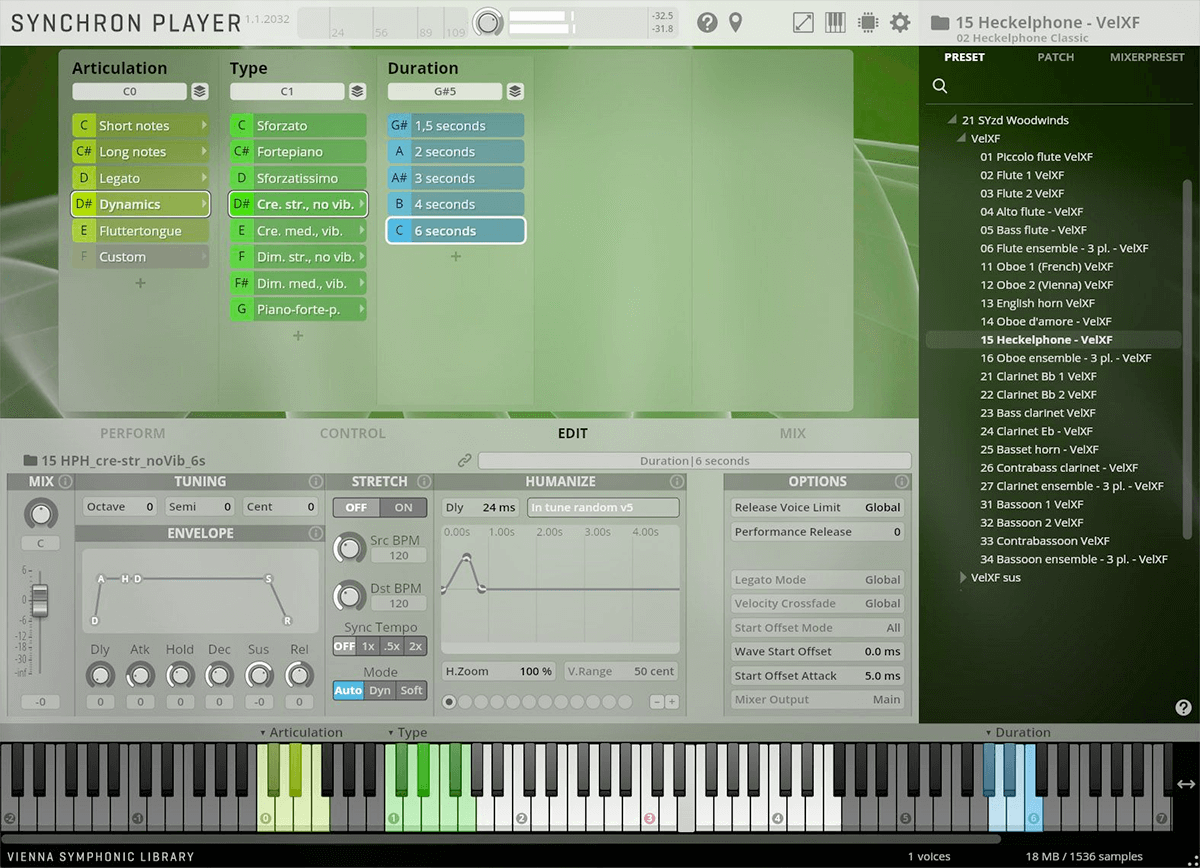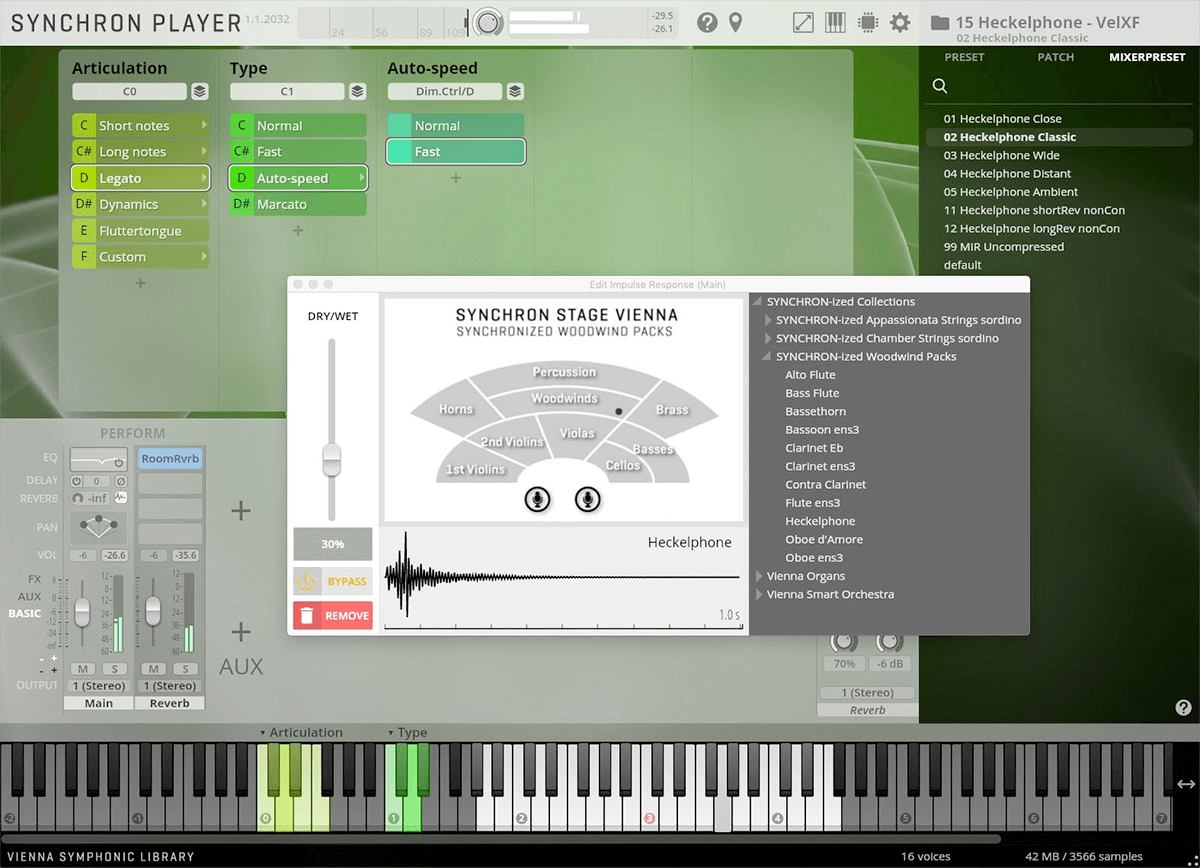The Newcomer in Woodwinds
The heckelphone, initiated by Richard Wagner, emerged in the 20th century. Its dark and expressive tone fills out the oboes' tenor register.
Recorded in the dry and well - controlled Silent Stage, our second studio, it offers all common articulations.
Key Features
- Heckelphone in C
- Recorded at the Silent Stage
- Covers short and long notes, legato, dynamics, flutter tongue, and repetitions
- Comes with Mixer Presets for authentic placement at Synchron Stage Vienna
- Turn off internal reverb to place it in any virtual acoustic setting
Low - pitched Reed
Tuned an octave lower than the oboe, it can replace the baritone oboe due to its similar sound.
With a wider bore, it has a heavier and more penetrating tone.
Well - loved by Composers
Great composers like Richard Strauss used it in works such as 'Salome', 'Elektra' and 'Eine Alpensymphonie'.
Edgar Varése, George Gershwin and many other composers also wrote pieces for the heckelphone.
Rich Sampling
The library has a full set of articulations, including short and long notes, legato (even fast legatos for trills), crescendos, diminuendos, sfz, sffz, pfp, flutter tongue, and repetitions.
It offers long notes with and without vibrato.
Dry recording at the Silent Stage allows you to place samples on your virtual stage and stereo field as you like. You can also integrate them with our Synchron Series using the internal convolution reverb of Synchron Stage Vienna.


Using the heckelphone is a great way to add a unique touch to your music. First, you can select from various articulations like short or long notes, legato, and dynamics to create different musical effects. When you're setting up the sound, you can use the Mixer Presets for an authentic feel at the Synchron Stage Vienna. Or, if you want to place it in your own virtual acoustic environment, just switch off the internal reverb. As for the heckelphone's maintenance, keep it clean and dry, especially after use. Since it's tuned an octave lower than the oboe and has a wider bore, handle it with care to maintain its heavy and penetrating tone. Remember, this instrument has been loved by many great composers, so have fun exploring its potential in your own musical creations!
